NASA has announced two finalists among 12 proposals submitted to the "New Frontiers" program - a rover to the mysterious and largest moon of the planet Saturn, Titan, or a return mission to the comet studied by the Rosetta probe, 67P/Churyumov-Gresimenko, in order to return from it Sample for Earth. NASA will announce the final winner of the two in 2019, and it will not be launched until around 2025.
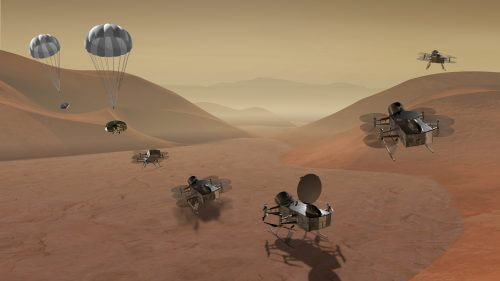
The American space agency yesterday announced two finalists in the competition for the next mission in the prestigious "New Frontiers" program: Dragonfly - a probe to Saturn's moon Titan, and CAESAR (short for Comet Astrobiology Exploration Sample Return), a mission to return a sample to Earth from comet 67P /Churyumov-Grasimenko, previously studied by the Rosetta probe.
Both proposals will now receive $4 million in funding to develop their concept, with the final proposal selected in 2019. The mission you choose will only be launched around 2025.
NASA's New Frontiers program is considered one of the agency's most prestigious, and medium among its planetary research missions - the mission you choose will receive funding of approximately 850 million dollars (not including the launch cost). The other two programs of the agency are the "cheap" Discovery program, in which missions are funded in the amount of about 450 million dollars, and the flagship mission program of the agency, in which missions are selected without competition and receive a huge funding of more than 2 billion dollars.
The mission that will be selected will be the fourth in the New Frontiers program - with the previous missions launched as part of it being New Horizons to Pluto, which is now continuing to another body in the Kuiper belt at the edge of the solar system and will reach it on January 1, 2019; Juno, now orbiting the planet Jupiter; and Osiris-Rex, which will reach the near-Earth asteroid "Beno" next year and return a sample from it to Earth in 2023.
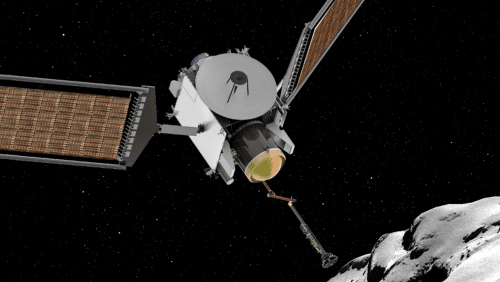
The two finalists won a fairly tough competition, and were chosen from 12 proposals submitted to NASA in April this year. the offers were required Engage in six different motifs in the current competition: Returning a sample fromAitken Basin-South Pole of the moon; Returning a sample from the core of a comet; a mission to Saturn's moons Titan or Enceladus; probe into Saturn's atmosphere; landed on the planet Venus; mission toTrojan asteroid of justice (assignment to several trojan bodies already chosen at the beginning of the year as part of the cheaper Discovery program, so no bids were submitted for this motif).
The agency also announced two proposals that were not selected, but will receive additional funding for the development and maturation of the technologies included in their proposals, in order to increase the chances of winning future competitions. The two chosen are the concept ELSAH (short for Enceladus Life Signatures and Habitability), which proposed to explore the moon Enceladus, where an ocean of liquid water is hidden under the icy surface; and the VICI (short for Venus In situ Composition Investigations) concept that proposed sending a lander to the hot surface of Venus.
CAESAR – Returning a sample from the comet of the Rosetta probe
The CAESAR mission proposal seeks to send a probe to return to comet 67P/Churyumov-Gresimenko, and return a sample from it to Earth for careful laboratory testing, which cannot be performed with the limited scientific instruments of robotic research probes.
"Comets are among the most scientifically important bodies in the solar system, but they are also among the least understood," said Steve Squires, the mission's principal investigator from Cornell University in New York, in a telephone press conference. "They are the most primitive building blocks of the planets. They contain materials from the earliest moments of the formation of the solar system and even before that."
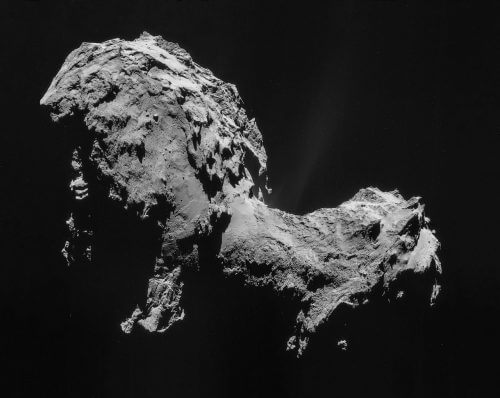
According to the proposal, the spacecraft will collect from the surface of the comet a sample weighing at least 100 grams, and put it in a capsule back to Earth. "The sample will be returned to Earth on November 20, 2038, so keep a journal," Squires said.
Squires is also the principal investigator of the "Mars Exploration Rover" program, within which the two twin rovers were launched Spirit וOpportunity to the planet Mars in 2004 (Opportunity is still active, too After more than 13 years). In what could be understood as a reference to the long duration of the proposed mission, Squires said that one of his lessons, from his role as the principal investigator of the Mars rover program, is that "patience is a virtue in this business."
As mentioned, the target from which CAESAR will take a sample is the same comet studied by the European probe Rosetta. The spacecraft reached it in 2014, and landed the Philae lander on it, whose landing was only partially successful. Rosetta crashed into the comet's surface in September 2016, after studying and photographing it in detail. This is exactly the reason, according to Squires, that Comet Churyumov-Grasimenko was chosen: since the surface of the comet's nucleus is very familiar, it is possible to develop and carry out the mission at a much reduced level of risk than if it were a new and unfamiliar comet.
CAESAR will be built, if selected, by Orbital ATK, and managed by NASA's Goddard Space Flight Center. It will use the sun's energy to power an ion engine on the journey to its destination and back to Earth.
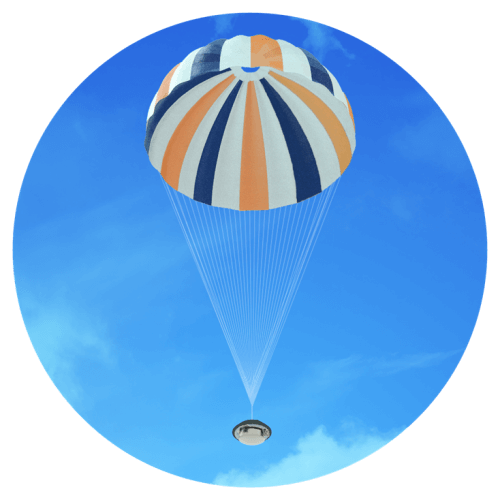
The mechanism for returning the sample to Earth will be provided by the Japanese Space Agency, and will be based on that of the "Hyabusa" probe. which returned To Earth in 2010 a sample from the tiny asteroid "Itokawa". According to Squires, the reason the Japanese mechanism was chosen, and not the one based on other American systems, is that since the sample will also include volatile substances such as ice from the face of the comet, and they want to keep them in a solid state all the way back, they must keep the sample as cold as possible. Of the return mechanisms to Earth, only the Japanese included the sending of the heat shield from the sample before the parachute landing on the ground, in a way that prevents its heat from passing to the sample itself, thus keeping it cold.
Dragonfly - a rover to Saturn's mysterious moon, Titan
"Dragonfly" (Dragonfly - Shapirit in Hebrew) is undoubtedly the boldest proposal among the 12 proposals submitted to the competition. The proposal seeks to land on Saturn's moon Titan a double quadcopter type glider (having four upper rotors and four lower rotors - the reason for the name of the glider, since dragonflies have two pairs of wings). If he chooses, he will expected reach Titan only in 2034.
Titan is the largest moon of the gas giant Saturn, which, its rings and its many moons were studied until recently by the Cassini probe, who ended her life crashing into Saturn on September 15, 2017. Cassini was the first spacecraft to see through the heavy haze in Titan's dense atmosphere, which makes it orange and dim in visible light. The spacecraft also released the European probe Huygens, which landed on the moon in 2005 and briefly operated on its surface. These discovered, among other things, that at its poles there are huge lakes of liquid methane and ethane; Dunes of "sand" made of complex hydrocarbon compounds originating from the abundant methane in the atmosphere; And beneath its surface, which consists of frozen water ice at a temperature of about minus 180 degrees Celsius, hides a global ocean of liquid water.
Elizabeth Tortell, the proposal's principal investigator from the Applied Physics Laboratory (APL) at Johns Hopkins University in Maryland, explained the purpose of the mission: "Cassini has mapped Titan in quite a bit of detail, which is very effective for identifying potential landing sites and knowing where the best places to land on Titan are, to make measurements to understand the organic chemistry on Titan's surface. In addition, the Huygens lander landed on Titan at a similar time of year, and at a similar latitude, to when and where Dragonfly will land, so we also characterized the atmosphere at that time. But these tasks left us with many fundamental questions. We do not know the basic composition of Titan's solid surface. We have some information from spectroscopic characterization from orbit [by Cassini], we have some information from the Huygens probe, but none of them were designed or capable of making detailed measurements of the rich kind of organic chemistry that we know is going on there. So Dragonfly is planned to return, build on what we learned from Cassini and Huygens and answer the basic questions that remain about Titan."
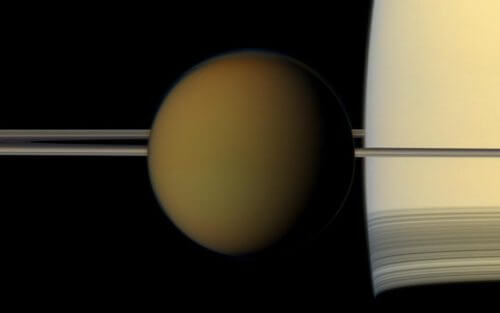
In order to study as many different geological sites on Titan as possible, which will be spread over distances of hundreds of kilometers, and thus increase the scientific return of the mission, the researchers want to send a rover to the surface of the mysterious moon. Titan is the only moon in the solar system with a dense and significant atmosphere. In fact, the atmospheric pressure on its surface is slightly greater than that on Earth. Together with its low gravity (14% of Earth's) - Titan provides ideal conditions for aviation.
At Titan's enormous distance from the Sun, along with an atmosphere that hides the drop of light that reaches it, the rover will not be able to use solar energy to operate. Instead Dragonfly will use theThermoelectric radioisotope generator (Type MMRTG), which produces electricity based on the heat emitted by radioactive material. A major advantage of such a generator is its ability to operate for many years. Other spacecraft that used such a generator, for example, are Cassini which operated for 20 years (and could have operated for many more years had it not been sent to a deliberate death inside Saturn) and the Voyager spacecraft, which are still active after 40 years.
To study Titan's atmosphere, surface and internal structure, Dragonfly will make several types of measurements: a mass spectrometer will use samples from the surface and atmosphere to determine their chemical composition; A gamma ray spectrometer will measure the general chemical composition of the surface; A system of atmospheric sensors will measure the atmospheric pressure, temperature and winds; Seismographic measurements will study Titan's internal structure; And of course - an array of cameras will characterize the exotic geology of Titan.
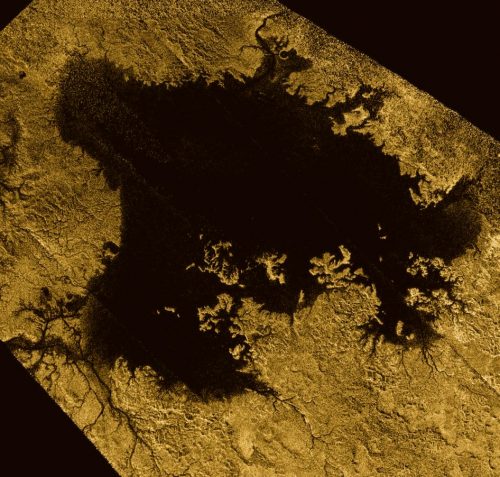
Titan's enormous distance from Earth will require the rover to be able to operate almost completely autonomously. Unlike the European Huygens lander that operated for a very short time on Titan's surface, and communicated with Earth via its mother spacecraft Cassini, Dragonfly will communicate with Earth directly.
The mission will be managed by the Applied Physics Laboratory (APL) and will also be built by it, in collaboration with researchers from Penn State University in Pennsylvania, who have experience in designing rotorcraft, and who have already built a model of the drone proposed as part of the initial proposal process.
See more on the subject on the science website:

4 תגובות
When planning a docking on a comet whose ground conditions are unknown, the most difficult scenario is taken,
and do not assume unknown conditions in advance.
The assumption that rings would grip the ground and pull the lander during the landing turned out to be wrong
The frozen ground was hard.
Therefore, it seems to me that the landing speed is correct in combination with rockets that will give the correct attachment force to the ground
would have solved the elastic collision problem.
I assume that the bell method was ultimately intended to allow drilling into the ground, to collect samples.
When planning a system for a soft landing on an object where there is no information about the type of landing ground,
The most difficult option should be taken.
The engineers made a preconceived assumption, planned with chimes that they would penetrate and hold.
In practice it didn't work.
I assume that a combination between the correct landing speed and counter rockets to attach to the ground would have solved the problem of landing with the elastic collision that was there.
wave
What was the planning mistake? I mean - what should they have done differently - without the experience of what happened in this case?
The Rosetta probe of the European Space Agency which landed or rather jumped
On the surface of Comet Churyumov-Grasimenko was an engineering design failure of the first order
The attachment of the lander to the comet was not planned correctly